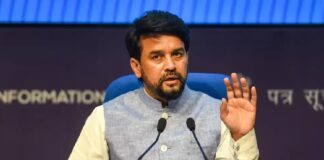The PLA transgressions of 2020 in Eastern Ladakh, the large induction of units and formations that followed brought the PLA and Indian Army face to face, often in a nail-biting situation. The Agreements signed with China over three decades had been lulling us into complacency and towards over-caution and placatory attitudes, were brought to a nought. This brought discussions of prospective conventional war in drawing-rooms, pumped in by the strong decibels through the audio visual media and nimble fingers across varied print, social media and digital platforms.
By Dr Rakesh Sharma
The ‘decline of conventional war’ theory – that armed conflicts between developed states are unlikely than it has historically been, and the argument that war has become less deadly, has been proven as fraught with grave prospective risks and dangers. The capitalist peace theory, that ‘…no two countries that both had McDonald’s had fought a war against each other since each got its McDonald’s’, which relied upon globalization, economic ties and avoiding the likely losses in conventional war, has been proven incorrect numerously, and so also in the current imbroglio.
War is a historic constant, and even if it does not happen, to prepare for it is mandatory. Case in point is the fact that “can PLA do a ‘Kargil’ in Eastern Ladakh”, was often debated internally in the Army, a scenario with response options that should have been formalised with political blessings! Contextually hence, it is necessary to correlate the political aims of war, the context of modern war and the prognostications of what can and cannot be victory in future wars.
Mindful of the ever-ready adversaries, for India the political aim and prognosis of scenarios or typology of warfare are essential to determine everything – the concepts, doctrines and strategy, and the force capabilities mandatory and organisational structures. The political objective will lay down military objectives, as also the capabilities and effort required achieving them. While it is imperative that the polity formally informs the military leaders what is desired, it is also incumbent on the military leaders to seek clarity of the political objective if it isn’t clear. Case in point is the directive issued by the Government to the first Overall Force Commander of the IPKF in 1987, which was stated as ‘delightfully vague’, directing him to ‘implement the Accord’– which itself was vague! This confused scenario cost the nation and the armed forces heavily!
There is an opinion that enjoins military leaders that “…the principle of civilian supremacy means not only carrying out the policy directives of civilian authorities, but also refraining from pre-empting them. By discussing in public questions of force or when and how to deploy it; generals can pre-empt their leaders or vitiate policy choices.”1 This seems to imply that military leaders have limited involvement in decision making that is mandated for national security. India has unsettled borders and currently, at the turn of 2020, both LOC and LAC are hot and tense, cumulated with the salience of maritime security. The armed forces are also incessantly deployed in countering infiltration and terrorism. This politico-military process of evolving scenarios, likely responses, the political aims and their translation into military end-state and the capabilities mandatory for execution of the military strategy, must not be procrastinated or relegated to the zero hour. Better understanding of the importance and necessity of a clear political aim will facilitate military planning processes. The bonding and mechanism, hence, between the political and military to jointly strategise for the future, is imperative.
The saying goes that best teacher of war, is war, though war is generally taken as extreme violence, aggression, destruction, and mortality, and hence avoidable. Nations invest billions of dollars in preparing the militaries for the next war. Strategists had in history forecast and laid down strategies and planned conduct of wars that did not succeed eventually. As the conceptualisation of future wars is built on the assumptions of the future, it can often go wrong.
Warfare has always remained evolutionary, but in last three decades, there has been a sprint towards newer technologies. Technology is placing warfare on a decisive threshold to transit into new modernity, and to forecast new war fighting strategies. Future Wars will also have asymmetric battle space that will include cyber, social, economic and psychological strategies that may or may not necessarily involve physical combat or destruction or even armed forces direct involvement. It would take non-military or military forms, as need be, and create a war on many fronts. Machines will make life-and-death engagement decisions, even without reliance on human interface. The domains of warfare have proliferated, and hence multiple agencies in India will be equally involved in future wars like the NSCS, armed forces, CAPF, NTRO, National Cyber Security Coordinator, DRDO, ISRO, Atomic Energy Commission and the intelligence agencies. This war of the future will actualise whole-of-Government approach!
China has been a master at obfuscation, in intimating three-warfare and three non-warfare strategies. The three-warfare strategy consisting of psychological warfare, public opinion (or media) warfare and legal warfare, has been critical component of China’s strategic approach, a form of state craft that encompasses non-kinetic means to achieve political ends. The psychological seeks to influence and/or disrupt opponents’ decision-making capability, create doubts, foment anti-leadership sentiments and diminish the will to fight. The media warfare, also called public opinion warfare, is a constant ongoing activity aimed at the long term influence of perceptions and attitudes, leveraging all instruments that inform and influence public opinion. And the legal warfare exploits the national and international legal system to achieve political and commercial objectives. As one delves into and analyses the three-warfares, it is apparent that political aims will be achieved largely by military coercion, manipulation and economics. Military coercion and manipulation take us back to Doklam in 2017 and Eastern Ladakh in 2020.
The three “non” warfares are, non-contact (fei jierong), non-linear (fei xianshi), and non-symmetric (fei duicheng). Non-contact warfare is logically outside the immediate range of enemy’s weapons and is therefore impervious to attack while retaining the ability to conduct its own strikes on the enemy. Non-linear warfare intimates no distinguishable battlefield due to the advancement of technology and co-dependent relationship between the opposing sides, and is exploited in the information space. Non-symmetric warfare attacks an adversary in every strategic domain but with the very limited use of military forces. Elements of these three warfare and three “non” warfares have been evident in China’s actions against India in 2020. The National Cyber Security Coordinator had recently stated that cyber attacks have gone up manifold and every day, four lakh pieces of malware are found and 375 cyber attacks are witnessed. Modern conflict will play out across domains that were practically unthinkable in earlier eras. Social media and information technology have drastically changed the way states engage in ideological conflict and propaganda. Coercion will be the key!
Apparently, warfare has moved on, necessitating the politico-military establishment to move on with it! This obviously does not imply that the salience of kinetic wars or the conflagrations across the LOC/LAC/IB will be eroded. The pressure on territory cannot be obviated, and defensive-offensive manoeuvres will have to be simultaneously planned for, though their salience and the depth of operations across should largely reduce. With dwindling defence budgets, veritable sprint in military technologies, the continued intransigence of the two adversaries and their apparent collusion, India maybe in a dilemmatic situation on enunciating futuristic military strategy and creating the right future force and capabilities. It can be argued that with competing analyses by the three Services, and the value each Service places on its own individual plans and objectives will not help determine the character of the next war, how long it will be fought, where, and at what cost. Modern war will not recognise land, sea or aero-space environment or electro-magnetic spectrum, it would concoct all and much more. Leaders, political and military, must understand the effects of a war that surpasses all boundaries and restrictions! We really need to think hard, especially now, about what the next wars are going to look like and what we can do to mitigate the danger. India is going to deal with a powerful state with openly stated revisionist goals, and a client one that clearly follows the biddings. Chinese actions in eastern Ladakh in 2020 are not a mirror image of the South China Sea annexation strategy; there are clear parallels over the last decade that indicates land is, as sea is!
That brings in the dubious concept of victory in the 21st century. In grey zone, when lines between peace and war are blurred, when more modern metaphoric wars are fought when supposedly peace reins, imperative is planning how to win in peacetime, as important as winning in war. Modern War will not end as on 16 Dec 1971 in the surrender moment in a traditional sense by signatures on instrument of surrender as in Dacca! Victory must be diversely defined, even by the society, on a common understanding of how a conflict is supposed to end. In this century, the people will soon ask the omnipotent question in the event of a war, ‘how will this end’? Is a war won by the armed forces of one side capitulating and laying down their arms? For some wars, victory is immeasurable by deposing the other side’s political system and not based on metrics of destruction of war waging potential and territory occupied.
There will be nothing romanticised about any prospective war, it will be fluid, complicated happening. A different conclusion will have to be drawn every time, with newer definitions of winning or losing, or even success. It is logical hence to define the end or likely ends before any war begins, and to follow it. In India, learning from experience, victory will remain imprecise, with amalgamation of contrarian opinions. It is possible to have a great tactical or even operational military victory; it may not produce either operational or strategic results. The perspective at tactical level will also differ at operational or strategic. Tactical success does not necessarily lead to operational success, which likewise does not guarantee strategic victory. What then will really be a win? Strategic advantage and strategic success is a different metric of measure. The argument is that the operational plans of the military that lead to a typology of victory may be unacceptable at political perch – where the national/world-view is different. The moral is that the politico-bureaucratic establishment has to involve and enmesh with the military strategies in peacetime based on logical, conceivable scenarios and response options thereof, lest the military plans and prepares for inconceivable wars, and does not in modernistic realms.
This article first appeared in www.vifindia.org and it belongs to them. The author is a research associate with VIF.












